Urban life in Mexico is lively, fast-growing, and varied. The country is highly urbanized, with most people now living in cities. This growth has reshaped social, economic, and environmental conditions, creating busy hubs of new ideas while also putting pressure on housing, services, and land.
Urban life in Mexico: Key facts and trends
What percentage of Mexicans live in urban areas?
Mexico shows the wider global move to city living. In 2023, 81.58 percent of the population lived in urban areas, a share that has risen steadily for decades. Cities attract people with jobs, services, and amenities that are harder to find in rural places. The pattern suggests urban living will keep growing.
In recent years, the urban share was 80.16% in 2018 and 80.73% in 2020, a slow but steady rise. Mexico has become a mostly urban society, which brings gains but also adds pressure on infrastructure, resources, and local government.
| Year | Urban population share |
|---|---|
| 1960 | 50.75% |
| 2018 | 80.16% |
| 2020 | 80.73% |
| 2023 | 81.58% |

How has urbanization changed in Mexico since 1960?
Since 1960, Mexico has seen a big shift to city life. The urban share was 50.75 percent in 1960 and reached 81.58 percent in 2023-an increase of 30.83 percentage points. This shows a fast embrace of urban living.
Growth from 1980 to 2010 was especially strong, with the urban population doubling. The rural population barely grew and is expected to fall by 2050, while cities keep adding people. Jobs, services, and education pull people in, but fast growth has also brought sprawl, long distances to work, and heavy demand on roads, water, and other services.
What are the largest urban centers in Mexico?
Mexico has many large and mid-sized cities. At the top is Mexico City, the country’s largest urban area and one of the five biggest on the planet. The city has over 20 million residents, and more than 21 million in the wider metro area-more than the populations of Chile (18.7 million), Guatemala (17.2 million), and the Netherlands (17 million).
Beyond the capital, the country has 16 cities with over 1 million people, including two with over 5 million. Another 38 cities have between 300,000 and 1 million people. About one quarter of all Mexicans live in the three biggest cities: Mexico City, Guadalajara, and Monterrey. The number of cities with more than 15,000 people is expected to rise from 249 in 2010 to about 747 by 2030, showing how fast urban areas are spreading.
Characteristics of Mexican urban living
Population density and settlement sizes
Mexico’s cities have a wide mix of densities and sizes shaped by history, the economy, and public policy. Mexico City is very large and dense, but many places are not compact. Growth often spreads outward, especially in big and mid-sized cities, leading to low-density sprawl rather than tight, walkable neighborhoods.
On the edges of major cities like Mexico City, rural and urban land blend together. Informal settlements in these fringe areas add people without always adding density. Growth tends to push outward into open land, which stretches distances to jobs and services. This sprawl raises daily travel needs and makes cities less efficient.
Types of neighborhoods and housing diversity
Cities in Mexico show a wide range of neighborhoods and homes. Historic centers feature colonial-era buildings, while newer areas have high-rises and modern complexes. The differences are sharp: wealthy districts with planned services sit beside informal areas on the outskirts.
Many outer districts feature small single-family homes in gated communities. These projects can be spread out and poorly connected, feeding sprawl. At the same time, many homes stay empty, showing a gap between supply, demand, and what people can afford. Informal settlements, or colonias populares, grow where formal options are out of reach. Residents often lack secure titles and basic services, upgrading their homes over time as income allows. This split shows ongoing challenges in building fair and inclusive cities.

Public spaces and placemaking initiatives
Public spaces in Mexican cities are central to daily life, culture, and social ties. From main squares to small parks, these places host markets, gatherings, and celebrations. Access and quality vary by neighborhood, reflecting wider social gaps.
Many cities are investing in placemaking-turning underused areas into active, people-friendly places. One example is Plaza de la Soledad in Mexico City’s Merced district. Once isolated, it has been reimagined as the Cultural and Community Plaza for Violence Prevention and Civic Learning. Started in 2015, the project invites residents to shape the square through social and cultural programs. These efforts help build community, improve daily life, and make cities places for connection, not just buildings and roads.
Infrastructure and municipal services in Mexican cities
Public transportation options
Public transport keeps Mexican cities moving, especially big ones like Mexico City. Services range from metro and bus rapid transit to city buses and local routes. Mexico City’s low-carbon Metrobús carries large numbers of riders and helps cut pollution-related health costs.
- Metro and light rail in major cities
- Bus rapid transit (e.g., Metrobús)
- City and suburban buses, minibuses, and colectivos
- Bike-share and growing cycling networks in some areas

Even with these systems, traffic is a major problem. Congestion in Mexico City alone is estimated to cost about 2.6 percent of national GDP. Many jobs are in central areas while many workers live far away, causing long commutes. People in informal areas often face poor roads, high fares, and long travel times. Policy changes at INFONAVIT now favor housing within a reasonable walk, bike ride, or transit trip of daily needs, pointing to more transit-focused growth.
Water, sanitation, and waste management
Water, sanitation, and waste services show both progress and gaps. Water supply and drainage have challenged Mexico City since Aztec times, with huge colonial works like the Huehuetoca Canal and the Tequixquiac tunnel. Today, almost all households in Mexico City receive fresh water, but it is not always safe to drink. Much of the supply comes from about 1,200 deep wells-some nearly 300 meters-which contributes to land sinking and requires long pipelines and pumping from distant reservoirs as aquifers drop.
Nationwide, over 70 percent of water bodies are polluted, and many cities pump too much groundwater. Sanitation and waste collection often fall short in low-income and informal areas, where homes may lack basic services. Families may have to buy water from private vendors, sometimes spending up to half of their monthly income. These gaps call for better infrastructure and fairer service delivery to protect health and the environment.
Electricity and digital connectivity
Electricity and digital access are core needs in city life. Mexican cities face the twin task of expanding coverage and keeping service reliable. Some power is made in urban areas, but much comes from outside the city. Middle- and higher-income residents usually get full utility service. In many poorer or informal areas, connections can take years or never arrive, which limits comfort, safety, and work options.
Mobile networks have grown quickly since the 1990s and now reach most of the country, opening doors to jobs, learning, and social ties. Still, a digital gap remains between richer and poorer areas. The 1985 earthquake’s damage to Mexico City’s phone system led to a more spread-out network in the late 1980s, showing how fragile systems can be and why stronger, more reliable setups matter. As cities grow, broad, fair access to steady electricity and reliable internet will support more inclusive and sustainable growth.
Economic and social life in urban Mexico
Main economic activities and job opportunities
Cities power Mexico’s economy and offer many kinds of jobs. Mexico City, Guadalajara, and Monterrey host major activity in manufacturing, services, finance, tech, and government. Mexico City houses many national and global company offices, federal agencies, and a large informal economy.
- Manufacturing and logistics
- Services, finance, and tech
- Government and public administration
- Retail, tourism, and the informal sector
Even with big urban growth, the link to strong economic gains has been weak over the last 40 years. Productivity per worker in Mexican cities trails cities in other OECD countries. Sprawl and scattered growth put many people far from jobs, which lowers productivity and well-being through long commutes and limited access. A better model would connect homes and jobs more tightly to capture the benefits that come when people and firms cluster together.
Educational institutions and access to learning
Education is a pillar of city life in Mexico. Mexico City has the country’s widest range of schools and universities. The National Autonomous University of Mexico (UNAM), founded in 1551, is the oldest on the mainland of Latin America and one of the largest in the world, with hundreds of thousands of full-time students.
Other key public schools include the National Polytechnic Institute and the Metropolitan Autonomous University. Private options like the Jesuit Ibero-Americana University and Anáhuac University add to the mix. The city also hosts top research centers, such as the College of México. Literacy rates in the capital are high, but some areas still face limited resources and high dropout rates at lower levels. Fair access to quality education across all neighborhoods remains a major goal for social mobility.

Healthcare services and urban health indicators
Health services in urban Mexico range from cutting-edge hospitals to clinics with limited resources. Mexico City draws patients from across the country and hosts large hospital complexes, respected research institutes, and many private and public clinics, especially in wealthier areas. Specialized centers include the Institutes of Cancer, Cardiology, and Nutrition.
Despite these strengths, public health challenges persist, especially where services are weak. Gastrointestinal illnesses remain common among children in low-income areas. Air pollution contributes to respiratory disease, and crowding can affect mental health. At the same time, middle- and upper-income groups face rising rates of heart disease and cancer tied to diet and lifestyle. Workers like pepenadores (garbage-dump scavengers) face added risks from infection and toxic fumes. More inclusive health policies and better living conditions are needed to improve outcomes for all residents.
Government and urban policies shaping Mexican cities
Urban governance and city administration
City governance in Mexico mixes central and local power. Mexico City, home to federal offices, is a prime example. Local and national politics overlap, and residents-often called chilangos-have strong influence through their numbers and protests. The president’s formal seat is the National Palace, with daily work often done at Los Pinos in Chapultepec Park.
Mexico City and the Federal District are one area, split into 16 delegaciones (similar to boroughs). For many years, the president appointed the mayor. Since 1997, voters have elected the mayor to a six-year term, and left-leaning parties have often led the city. Heads of delegaciones have been elected since 2000. A local assembly also shapes policy. These changes aim to make city government more democratic and responsive, though coordination remains hard, especially on informal housing and fast metro-area growth.
Sustainable urban development strategies
Mexico is building policies to balance city growth with social and environmental goals. To fight sprawl, the National Development Plan once tracked how land use compares to urban population growth, pushing cities to use land more efficiently.
Global partners support this work. Mexico is the most studied country using the City Prosperity Initiative (CPI). From 2015 to 2018, 305 cities were measured, creating a strong base of evidence for planning. Mexico earned the Dubai International Prize for its CPI rollout and leadership in tracking the New Urban Agenda. Housing policy is shifting too: INFONAVIT now emphasizes location and access, funding homes within walking, cycling, or public transport reach of daily needs. This change promotes denser, better-connected, and more resilient growth that puts equity, access, and the environment at the center.
Initiatives for inclusive and resilient cities
Policies aim to make cities fair and strong in the face of shocks. A major focus is on colonias populares, which often lack basic services and secure tenure. Since the 1970s, land reforms have worked to formalize these areas, grant property rights, and bring them under city rules so they can get water, sanitation, and other services.
Participation is also key. Work like “Explorando la Función del Presupuesto Participativo en la Aceleración de los Objetivos del Desarrollo Sostenible” links participatory budgeting to the 2030 Agenda, giving communities a voice in spending. Urban regeneration projects in Mexico City aim to revive public spaces and living conditions, using tools like mapping, public space networks, and new finance in partnership with residents and other stakeholders. National plans have placed prosperity at the center of development, while UN-Habitat continues to support sustainable strategies, reduce urban poverty, and strengthen policy dialogue and local knowledge.
Challenges and opportunities in Mexican urban life
Crime, safety, and social inequalities
Crime, safety, and inequality shape daily life in many Mexican cities. Big income gaps split neighborhoods, leaving some areas with good services and others with limited support and more insecurity. In Zapopan, the “Assessment of the Impacts of Crime on Urban Economic Competitiveness” project helped local officials build better crime prevention strategies, recognizing how crime can hurt local economies.
In colonias populares, residents often lack secure tenure and basic services, which lowers living standards and access to care. These conditions can harm health and safety and need to be high on the policy agenda. Public space projects also seek to improve safety, like the change at Plaza de la Soledad in Mexico City, now used for community and civic programs. Tackling these issues needs broad, long-term approaches that reduce inequality and increase safety for everyone.
Urban sprawl and environmental concerns
Sprawl is one of the biggest urban challenges in Mexico. City areas have grown faster than populations. From 1970 to 2000, Mexico City’s footprint expanded 1.5 times faster than its population. Large housing projects, especially those once financed with a focus on volume over location, helped spread the city outward. Many homes remain empty or far from jobs and services.
Sprawl adds to carbon emissions from transport and construction, as people drive longer distances. Growth into rural and open land damages habitats and ecosystems. Water problems add to the strain: over 70 percent of water bodies are polluted, and heavy groundwater pumping leads to subsidence in places like Mexico City. A better path is to move from car-based, spread-out growth to denser, closer, and greener patterns. New INFONAVIT rules that favor homes near services and transit point in that direction.

Post-pandemic recovery and future trends
Mexican cities are working to recover from COVID-19 while planning for the future. The pandemic showed the need for strong public health systems, flexible planning, and open public spaces. Urban Thinkers Campuses in May 2020 focused on city and community safety during COVID-19, pushing for plans that can adapt to shocks.
Placemaking has gained new importance. In July 2021, a Mexican city put placemaking at the center of its recovery plan, using public spaces to boost community well-being and local economies. Urban regeneration efforts aim to improve public areas and daily life. Looking ahead, expect more focus on sustainable and inclusive growth, with policies that limit sprawl, improve access, and offer fair service coverage. Work by UN-Habitat with federal and city governments to build evidence and carry out strategic projects will guide cities to a more resilient and prosperous future, using innovation and digital tools to support social resilience and the Sustainable Development Goals.
FAQs and common misconceptions about urban life in Mexico
Is urban living in Mexico affordable for most people?
Affordability is uneven. While some smaller cities and outer districts offer lower costs, many people struggle to find decent, well-located housing. Income gaps split the housing market. Estimates suggest that a low-income family could need 120 years to pay for an average home without help, showing how hard buying a home can be.
Sprawl adds costs. Many homes sit far from jobs and services, and some large complexes on the edges are abandoned or empty. Long trips raise transport costs. In informal areas, families may spend up to half their income on water due to lack of formal services. Policy shifts now favor homes closer to daily needs, but for many households, city living still puts a heavy strain on budgets.
How do urban communities preserve culture and tradition?
Mexican cities keep traditions alive by weaving them into daily life. Public spaces-markets, plazas, and streets-host events, music, and celebrations. Mexico City’s Zócalo fills every September 15th for the Grito de Dolores, marking Independence Day and uniting huge crowds.
Neighborhood festivals, religious processions, and community gatherings carry regional identities into the city. Street art, food, and traditional crafts thrive in urban markets. Strong community bonds, even in informal areas, help maintain shared practices. Despite pressure from global culture, residents create and protect spaces where local customs continue.
What are some unique aspects of Mexican urban culture?
Mexican urban culture blends ancient roots, colonial heritage, and modern trends. Street life is energetic: vendors sell tacos and crafts, and mariachis play in public squares. The tianguis-traditional open-air market-remains a key part of many neighborhoods.
Art and public expression stand out. Murals with social and historical themes color city walls, especially in Mexico City. Architecture spans pre-Hispanic ruins, grand colonial buildings, and bold new designs. Football (soccer) brings people together across income lines. In many places, residents organize to face daily challenges, showing strong community spirit. Together, these elements shape a rich, distinct urban culture.


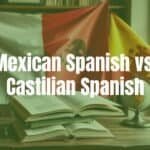

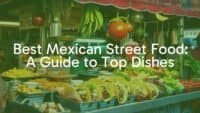
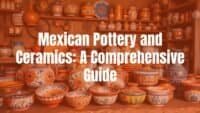

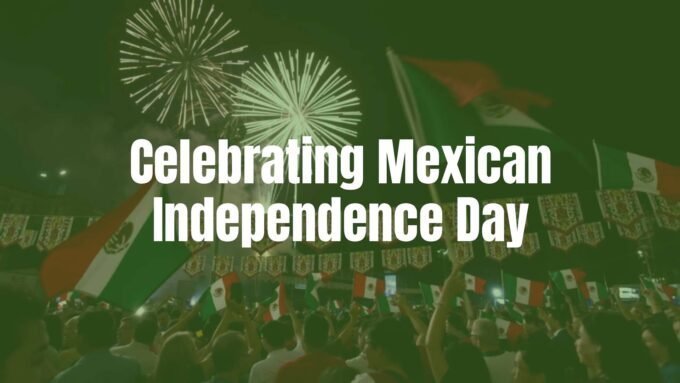
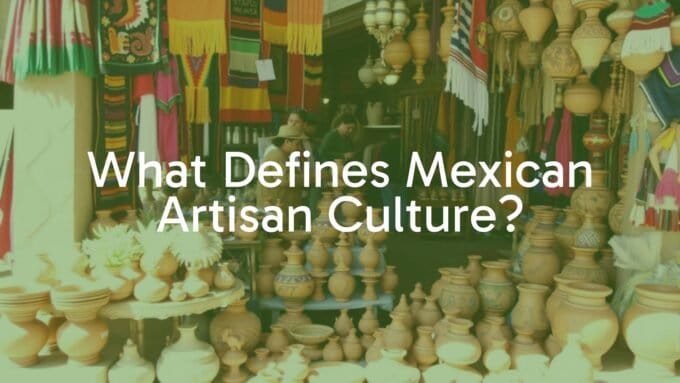
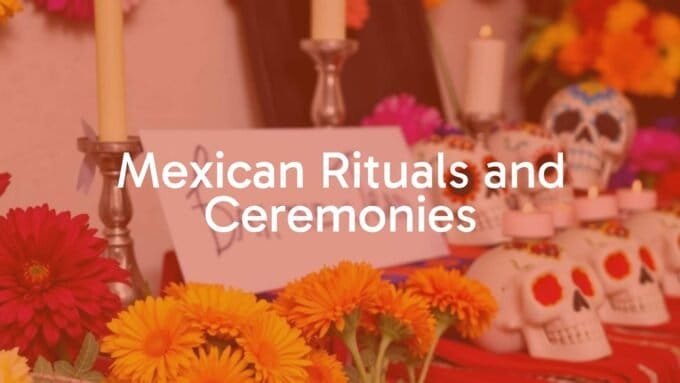
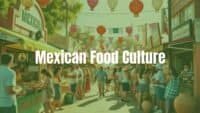
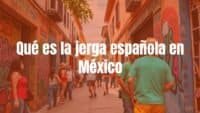
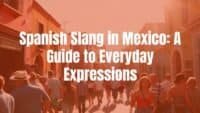
Leave a comment